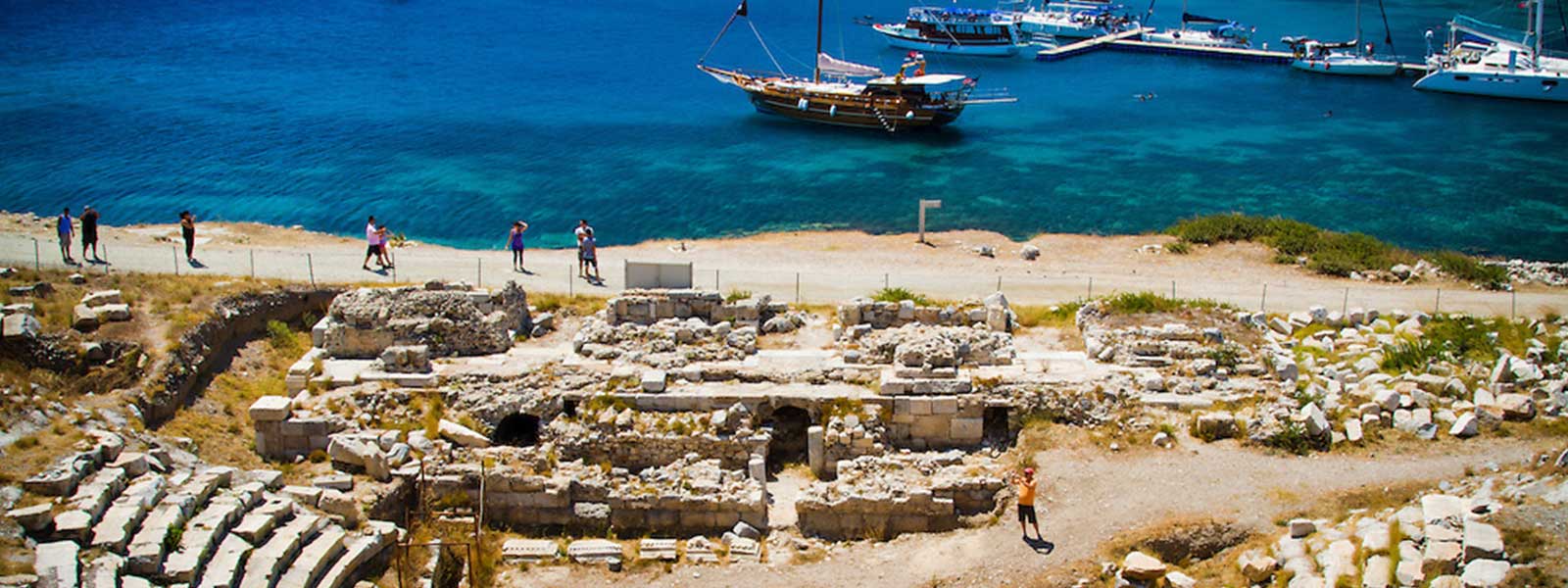
KNIDOS, TURKEY
The setting of the archaeological zone of Knidos is particularly lovely, lying as it does at the lip of the promontory that stretches out to the west of Marmaris and theoretically separates the waters of the Mediterranean from those of the Aegean. According to a description made by Strabo, it was built on a terraced slope, rather like an amphitheater, from the coastline up to the highest point of the Acropolis. The city had two ports, one of which was military in nature and could be closed as well as offering anchorage to a score of triremes. Despite the silting up of the docks, which today form a real isthmus, it has been possible to uncover evidence of the narrow canal which originally connected the northern and southern ports.
It held an important position among the cities of the west coast of Asia Minor; it belonged to the Dorian Hexapolis and developed an intense trade and prosperous activities connected with the exportation of its excellent wines. The city was a center for the arts and culture; the birthplace of the architect Sostratus, who designed the Pharos or lighthouse of Alexandria, considered one of the wonders of the Ancient World, as well as of the astronomer and mathematician Eudoxus (5th cent. BC). The inhabitants of the city erected their treasury in Delphi in the second half of the 6th century BC, while the wall frescoes in the Pecile of Knidos in Athens were admired for the fine painting by Polygnotos (mid-5th cent. BC).
The Hellenistic city walls of the ancient city have been preserved while the town plan reveals the project of Hippodamos of Miletus. Archaeological research in the second half of the 19th century has brought to light a fine statue of a seated Demeter, now in the British Museum, while various Roman copies give us an idea of what the stupendous Aphrodite by Praxiteles in the temple of Aphrodite must have looked like.
